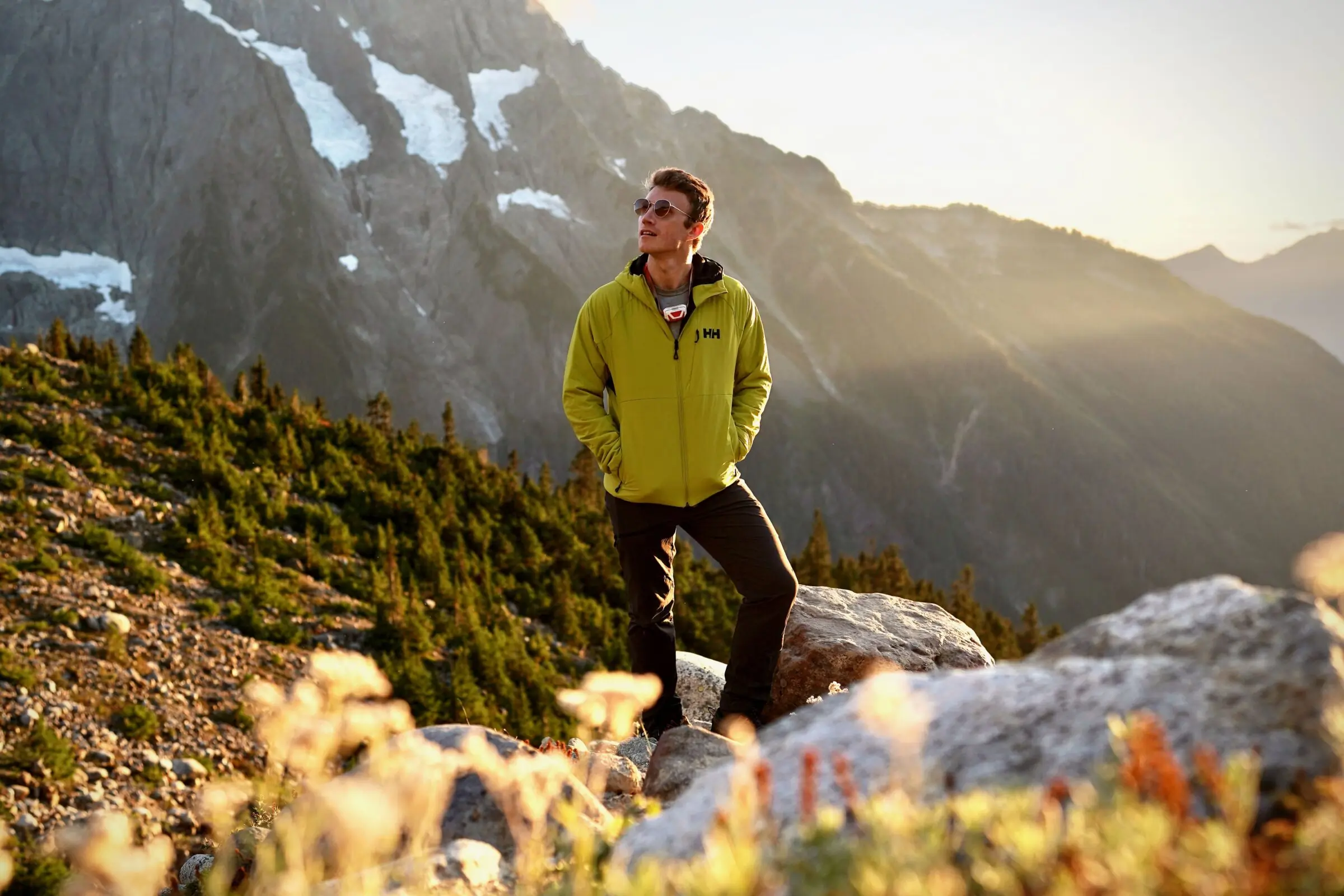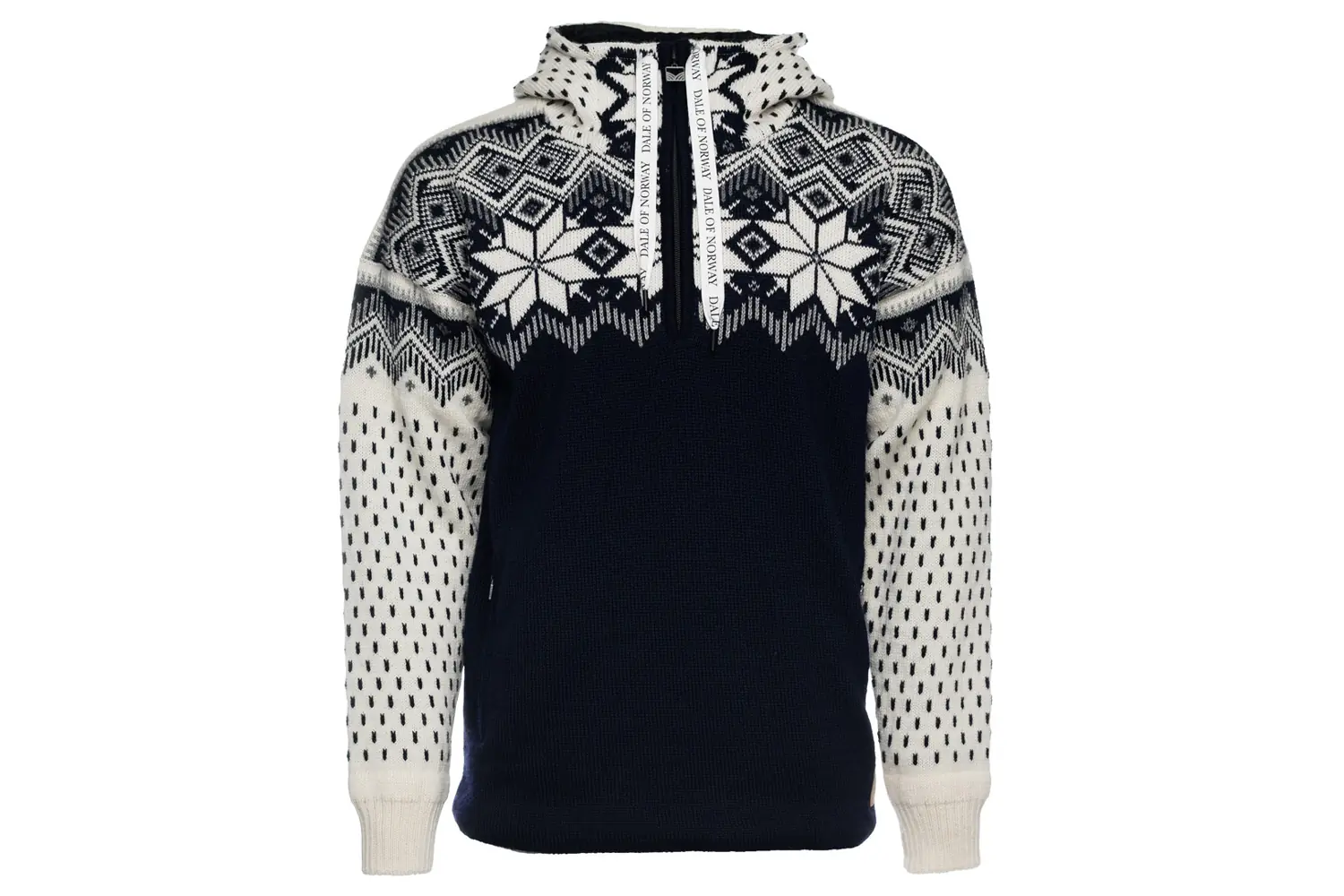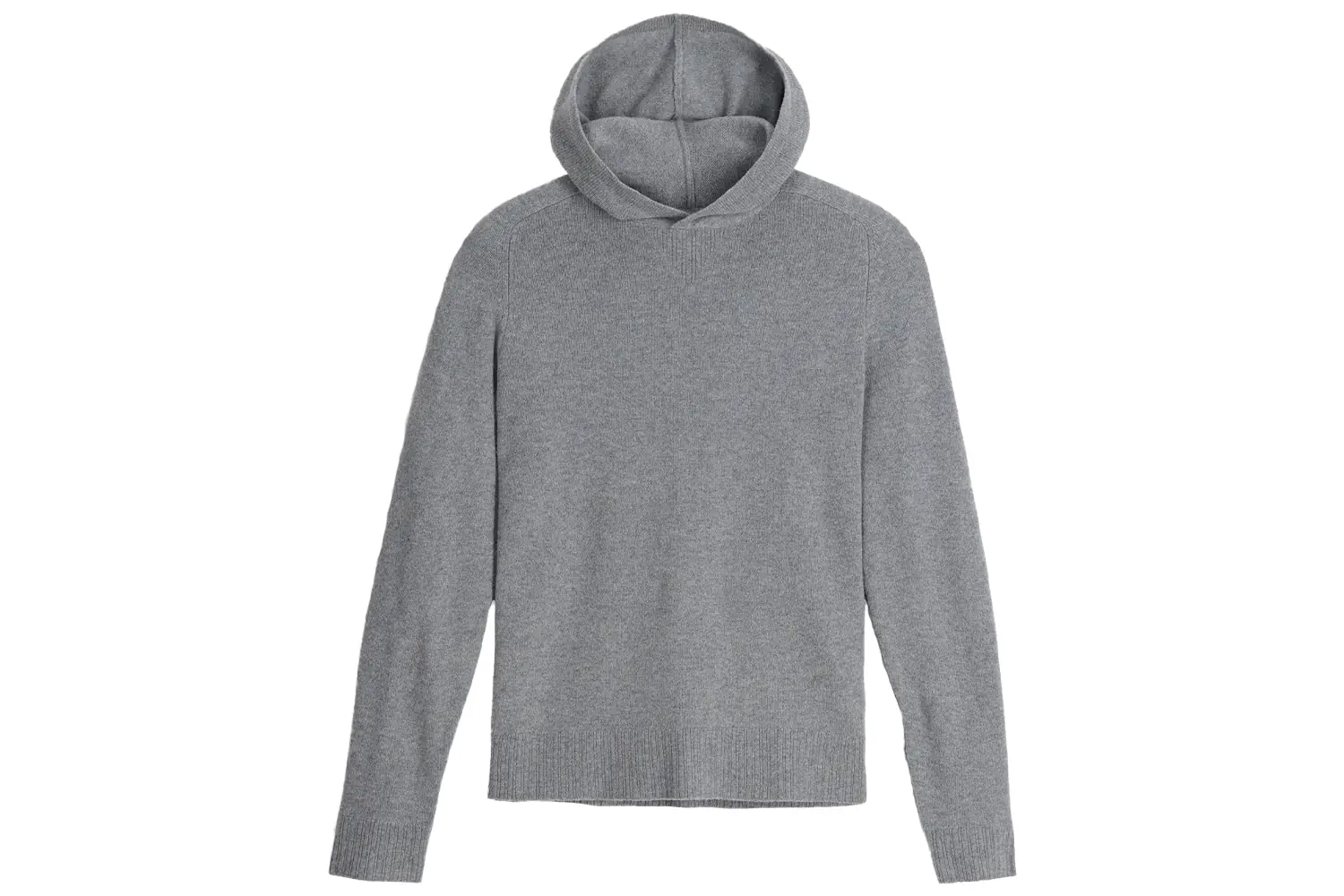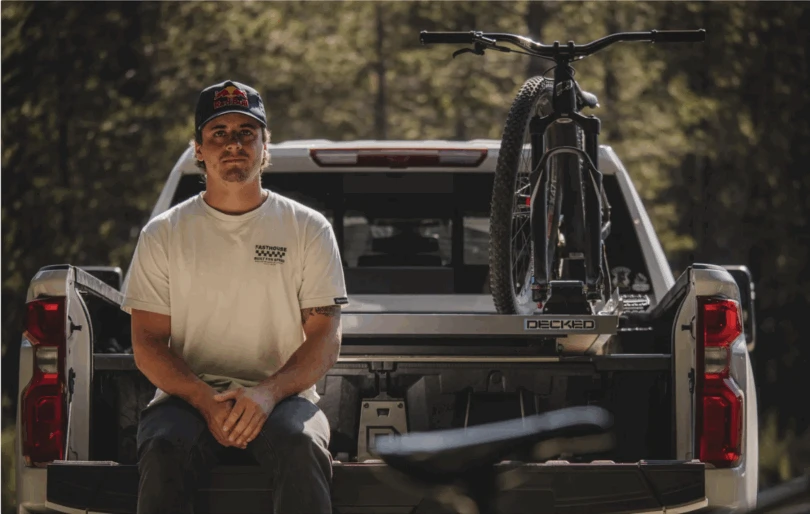We used to associate wool sweaters with being trapped in itchy, sweaty, bulky hotboxes that we had to endure until our parents finally let us take them off. In the years since, weaving techniques and treatments have turned these wearable saunas into soft, breathable, premium garments.
Most wool varieties come from sheep (especially the lauded merino), but others come from goats, alpaca, and even the occasional muskox. Super-soft cashmere was once extremely expensive, but now many cashmere sweaters are priced to fit many budgets. For the outdoorsman, merino wool has sweat-wicking and quick-drying properties that rival synthetic materials. As a bonus, merino naturally limits odor.
To develop this list, we tested dozens of sweaters from brands including Patagonia, Smartwool, Ibex, and Pendleton. We donned sweaters for active and casual use, assessing breathability in the mountains and comfort at the bar. Our testing process spans multiple winter seasons, and we’ll continue to consider new styles as they hit the market going forward.
Whether you’re looking for a gift for a loved one or some cozy self-love, there are many sweaters across a variety of price points that are perfect for any situation. So get a fire going, pour a hot cup of cocoa, and check out our list of the best wool sweaters of 2024.
Editor’s Note: We updated this guide on November 26, 2024, to add two new products: the all-weather Dale of Norway Vegard Windstopper Hoodie and our new best hoodie, the Royal Robbins Rockcraft Wool Hoodie.
The Best Wool Sweaters of 2024
Pendleton Original Westerley Sweater
- Style: Full-zip cardigan
- Material: 100% lamb's wool
Pros
- Iconic vintage styling
- Warm
- Comfortable
Cons
- Not ideal for technical use
Outdoor Voices MegaFleece Snap Up Pullover
- Style: Snap-up pullover
- Material: 63% reclaimed wool/24% nylon/13% polyester
Pros
- Warm
- Stylish
- Great deal for the price
Cons
- Bulky for certain activities
- Takes a while to dry
Dale of Norway Vegard Windstopper Hoodie
- Style: Half-zip hooded pullover
- Material: 100% Norwegian wool, windproof lining
Pros
- High-quality, ultra-fine wool
- Windproof and waterproof
- Beautiful design
Cons
- Very pricey
- Gets extra toasty when the weather warms up
Royal Robbins Rockcraft Wool Hoodie
- Style: Pullover hoodie
- Material: 100% merino wool
Pros
- Integrated hood adds versatility and sun protection
- Lightweight
- Breathable
- Great for active use
Cons
- Merino can be a bit prickly
- Has that wet dog smell when you get it wet.
Ibex Shak Jacket
- Style: Full-zip sweater
- Materials: 100% merino
Pros
- Warm for its weight
- Classic, simple styling
- High-quality zippers
Cons
- Expensive
Other Great Wool Sweaters
We tested dozens of sweaters for this guide, but only a few really stood out. While the awarded sweaters are top-tier, others also deserve recognition. Here are some other sweaters that are worth a look.
- Style: Lightweight classic crew
- Material: 55% recycled polyester, 30% merino wool, 15% nylon
Pros
- Comfortable
- Great warmth-to-weight ratio
- Black marl gives it a textured look
Cons
- Very athletic fit
- Not ideal as activewear
- Style: Crewneck pullover
- Material: 95% recycled cashmere, 5% wool
Pros
- Fine, wonderfully soft texture
- Good value for cashmere
- Lightweight yet warm
Cons
- A bit delicate
- Style: High-neck zip cardigan
- Material: 100% wool
Pros
- Durable
- Dries quickly
- Versatile
Cons
- Can feel a bit scratchy without an undershirt
Wool Sweater Comparison Chart
| Sweater | Price | Style | Materials |
|---|---|---|---|
Pendleton Original Westerly Sweater | $249 | Full-zip cardigan | 100% lambswool |
| Outdoor Voices MegaFleece Snap Up Pullover | $138 | Snap-up pullover | 63% reclaimed wool, 24% nylon, 13% polyester |
| Dale of Norway Vegard Windstopper Hoodie | $595 | Half-zip hooded pullover | 100% Norwegian wool, windproof lining |
| Royal Robbins Rockcraft Wool Hoodie | $140 | Pullover hoodie | 100% merino wool |
| Ibex Shak Jacket | $260 | Full-zip sweater | 100% merino |
| Smartwool Sparwood Crew Sweater | $105 | Lightweight classic crew | 55% recycled polyester, 30% merino wool, 15% nylon |
| Patagonia Recycled Cashmere Crewneck Sweater | $199 | Pullover crew neck | 95% recycled cashmere, 5% wool |
| Fjallraven Ovik Zip Cardigan | $250 | High-neck zip cardigan | 100% wool |
How We Tested Wool Sweaters

Our Expert Testers
Our lead wool sweater tester is Andrew Potter. Based on the east side of California’s High Sierra, Potter faces an annual long winter season — a perfect time to sample cozy sweaters. To put this list together, Potter rocked dozens of sweaters during all sorts of casual and active affairs. Affiliate Managing Editor Billy Brown wrote the original article and came back for the latest update to lend his cozy expertise.
Our Testing Process
For this guide, we considered the most durable, highly acclaimed, well-constructed, and environmentally responsible wool sweater styles. We’ve made sure to include options that will satisfy folks on all sorts of outdoor pursuits, from alpine first ascents to casual bike rides to work. Since the most stylish sweater may not be the best option for a chilly fall day of yard work, we’ve taken care to consider each one’s best applications and limitations.
From snowy environments in the Rockies to summer evening campfire hangs, we tested sweaters in every season and every region. Our crew has used these sweaters for urban commutes, rock climbing, backcountry skiing and splitboarding, bikepacking, and alpine skiing. The testers ranged from AIARE-certified backcountry venturers to lifelong recreationists. Check out some of the other cold-weather essentials we’ve tested, like the best winter jackets.


Buyer’s Guide: How to Choose the Perfect Wool Sweater
Materials
There are many varieties of wool coming from a wide range of animals. This variety ensures that there are wools for a myriad of applications, but it also adds confusion when it comes to buying a sweater. We’ve taken a few of the most common (or interesting) wools and given them a brief look to give you an idea of which type is right for you.
Lambswool
As its name suggests, lambswool comes from the first shearing of a young sheep. This usually takes place when the animal is around 7 months old. The resulting wool is exceptionally smooth and fine, resulting in a notably soft feel. This softness makes it ideal for next-to-skin uses, like hats and gloves. Its hypoallergenic properties and resistance to dust mites also make lambswool great for bedding. On this list, the Pendleton Westerly Sweater is made from 100% lambswool.
Merino Wool
Highly regarded for its breathability and sweat-wicking properties, merino wool is sheared from merino sheep. The fibers are very soft as well, which makes merino ideal for base layers and running apparel. This wool is also known for its ability to resist body odor, which makes it great for multiday trips and stage races.
Merino wool sweaters are often on the pricier side. This is due to the scouring process required to remove the grease in the material. This scouring entails washing the wool in chemicals to remove the grease, resulting in roughly half of the initial wool. On this list, the Ibex Shak Jacket is made from 100% merino.


Alpaca Wool
These South American camelids produce hollow fibers, which makes alpaca wool a great lightweight insulator. Not only is it lighter and warmer than sheep’s wool, but alpaca wool is also extremely soft. It’s comparable to cashmere in softness, but it’s quite a bit stronger. Alpaca’s excellent breathability and quick-drying properties make it an ideal material for insulative midlayers. On this list, the Appalachian Gear Company All-Paca Hoodie is made from 100% alpaca wool.
Shetland Wool
Sheared from sheep from Scotland’s Shetland Islands, this wool is thicker and coarser than other wools. Shetland sheep live in a colder climate, which results in the unique properties of this wool. You can find this wool in tweeds and Fair Isle sweaters, like Pendleton’s Original Westerley.
Camel Hair
Most of this wool comes from Bactrian camels, which are generally found in Mongolia, China, and Russia. Rather than being sheared, it’s collected when the camels molt. The wool’s hollow fibers are finer and longer than sheep’s wool. This makes it about as soft as cashmere. Most often, the wool is kept in its natural color, a pleasing golden brown.
Cashmere
This wool is shorn from the undercoats of cashmere goats at the beginning of the molting season. This undercoat yields exceptionally fine fibers and produces the super-soft sweaters and apparel cashmere is known for.
Cashmere is also known for its high price due to the low yield per goat. Because this wool is exclusively from the undercoat, a single sweater requires shearing several goats. On this list, the Patagonia Recycled Cashmere Crewneck is made from 95% cashmere.
Angora
Despite the name, Angora wool isn’t sheared from Angora goats. (Shearing Angora goats results in a material called mohair.) It comes from Angora rabbits, which is so cool we had to include it here.
These fibers are the lightest and warmest we’ve worn thanks to their smooth, hollow fibers. If you’ve ever petted a bunny, you’ll have an idea of how soft this is. But this softness comes with some caveats.
First, Angora sweaters are prone to matting and pilling, so Angora fiber is generally mixed with other fibers to enhance durability. Second, that fineness requires breeders to comb the rabbits daily. While it’s probably great for the rabbits and a job we’d gladly apply for, it adds to the wool’s substantial price.


How to Choose the Best Wool Sweater for You
The best wool sweaters are known for their warmth-to-weight ratio, which makes them ideal for both active and casual use. That said, there are wool sweaters that specialize in both categories, and it’s helpful to know what your intended use is.
For purely athletic use, we highly recommend the Yardang Jersey and the Capilene Air Hoody. Both are extremely light for the warmth they provide, and the weaves maintain flexibility that’s ideal for activities like climbing, cycling, and hiking. Wool is always going to be warm — even when it’s wet. The biggest considerations for active use are going to be flexibility, moisture wicking, and weight. Both of these wool sweaters excel in those categories.
For casual use, your options will vary depending on the style you’re interested in. Obviously, the Pendleton Original Westerly sweater is an ideal choice, but we’d also recommend the Outdoor Voices MegaFleece Snap Up and the Smartwool Sparwood Crew. Each option has a different aesthetic, and all three offer a casual look that would also suffice if you happen to find yourself walking instead of opting for a rideshare on a night out.




If you want a wool sweater that can do it all, the All-Paca Fleece Hoodie is probably your best bet from this list. As the review implies, it’s ideal for active use, but we also found it to work great for casual use. It looks great, doesn’t have too athletic of a fit, and is extremely comfortable for wherever your day might take you.
Price & Value
The price of wool sweaters can vary due to what type of wool the sweater is made from, its intended use, and other factors. One constant in this category is that wool sweaters are generally pretty pricey — it can be hard to find one for under $100. Here’s what you can expect to get in different price ranges.
Budget
You can find some solid wool sweaters in the under $200 range. Our favorite budget wool sweater, the Outdoor Voices MegaFleece Snap Up Pullover ($138), is durable, offers solid stretch, and looks great. If you’re trying to get closer to the $100 mark, the Sparwood Crew Sweater ($105) from Smartwool is stretchy, dries quickly, and works well in both in-town and outdoor settings.
Mid-Tier
Looking for a little more? In the $200-300 range, you’ll find more durable weaves, as you’d find in our best overall pick, the Pendleton Original Westerly Sweater ($249), which is still in our regular rotation. (If it’s good enough for The Dude, it’s good enough for the rest of us.) You’ll also see more technical options like the Ibex Shak Jacket ($260), a full-zip sweater that is buttery soft and dries extremely quickly.
Premium
When you spend over $300, you start finding sweaters with unique features and specialty uses, like the Dale of Norway Vegard Windstopper Hoodie ($595). It’s pricey, but the Vegard’s Norwegian wool is treated to be water- and dirt-resistant, and the integrated windproof layer makes it useful as an outer layer when the weather turns against you.
Frequently Asked Questions
Because different wools have different properties, it all depends on what you want from your sweater. If softness is your priority, look to cashmere, mohair, Angora, and lambswool. If you’re looking for durability, look to Shetland wool and alpaca.
For athletic purposes, you’ll need wool that can manage heat and sweat. Alpaca and merino are both highly regarded for their ability to vent excess heat and dry quickly, which makes them ideal for running, hiking, and other activities. Additionally, they’re odor-resistant, so they can be worn for multiple days or workouts without needing a wash
Merino wool and synthetics are both well-known for their uses in the outdoor and fitness arenas. Both are very effective at wicking away sweat and venting excess heat, but there are a few notable differences.
Merino is excellent for its ability to stay warm even when wet. It’s highly breathable, soft to the touch, and highly odor-resistant.
On the other hand, wool is often much pricier than synthetic materials. And synthetics tend to be more durable and last longer than wool (unless the wool is bolstered with synthetic material). Some types of wool, such as alpaca, are more durable than others and can result in apparel that’s closer to synthetics in terms of toughness.
But synthetic materials soak out quicker when you sweat, can get downright chilly when wet, and are not known for their ability to repel odor. In fact, it seems like they attract odor and hold on for all it’s worth. For us, the smell factor alone tips the scales toward wool. And when you add the ability to stay warm when wet, the softness, and the sheer variety of options available, wool is definitely our choice material for sweaters and base layers.
Lambswool is taken from the first shearing of a lamb, resulting in soft, fine wool. However, because it can be taken from any sheep, the micron count can vary quite a bit and is often not stated. A smaller micron measurement means finer and softer wool. Merino wool is considered very fine, which means the fibers are smaller than 24 microns in diameter.
For an everyday sweater, this isn’t as much of an issue. For travel, adventure, and outdoor purposes, merino is ideal. It has an excellent warmth-to-weight ratio, dries quickly, and retains warmth even when wet in cold weather.
Merino is more versatile than lambswool and can be useful in a wider range of activities. If you want to be ready for anything, merino wool is the way to go.
It depends on the type of sweater. The agitator in a washing machine can ruin the knit of a sweater and can greatly reduce the life of the wool. And always avoid hot water and dryers, as heat will shrink the garment.
The best way to find out how to clean your sweater is to check the sweater’s tag for cleaning instructions.
If your sweater is machine-washable, do this:
- Turn your sweater inside out and wash it with like colors. Close all zippers, if any.
- Use a mild soap or wool detergent. Do not use bleach or fabric softener.
- Lay flat to dry. If you’re drying it outside, make sure it’s in the shade.
If your sweater is dry-clean-only, you can probably handwash it. Here’s how:
- Fill a clean sink, tub, or another basin with cold water, and then add a bit of mild soap or wool detergent.
- Dip your sweater in and out of the water until it’s soaked, and then gently agitate it in the water. If there are any soiled spots, rub those spots softly with your fingers.
- When it’s clean, drain the tub and refill it with cold water. Dip and redip the sweater in the water until it’s soap-free.
- To dry it, lay it on a towel, roll up the towel, and then squeeze it to remove the water. Move it to a drier part of the towel, repeat until the sweater stops dripping, and then lay it out flat to dry. As above, if you lay it out outside, make sure it stays out of the sun.


The Best Sun Shirts of 2025
We tested the best sun shirts from REI, Black Diamond, Patagonia, Mountain Hardwear, and more to help you find the best option for your needs and budget.


The Best Synthetic Insulated Jackets of 2025-2026
We tested the best synthetic insulated jackets from Arc’teryx, The North Face, Patagonia, and more to help you find the best option for your needs and budget.















